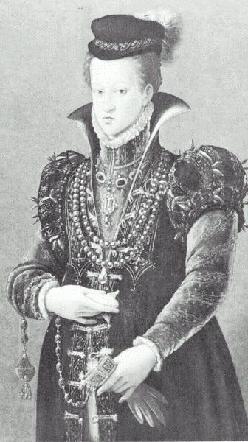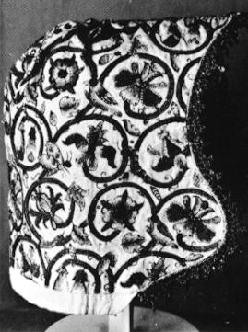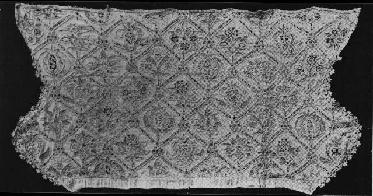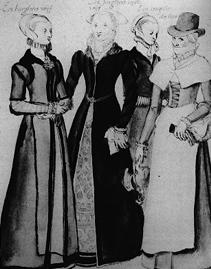|
Simple Headcoverings for the Late Period Beginner
Lady Lisette la Roux
University Session #59
|
In today’s day and age, a covered head does not carry the same significance in everyday clothing that it has in years past. For centuries proper headwear was a necessary part of day to day life. For social, political, environmental and even sanitary reasons, headwear played a vital role in the ensemble. Within the SCA, a properly covered head can take your garb from “Nice” to “Wow!” Not only does it show more attention to detail, but it also completes the picture from head to toe and is more historically accurate.
However, for those of us that are not milliners by trade or hobby, a hat can be a scary venture to undertake. A relatively easy way for the 16th century (late SCA period) beginner to accomplish this task is with a coif and flat cap.
|
 |
| Edward Windsor, Antonio Mor, 1568 |
|
Flat Caps
Diversity in headdress has been seen throughout the centuries, but during the early 16th century, the “Flat Cap” began to emerge. Many variations of this style of hat appear that span the social classes and towards the later 16th century (or Elizabethan era) cross gender barriers as well.
|
 |
| The Infanta Isabella Clara Eugenia, Pantoja de la Cruz, c. 1584 |
|
Wool in England in the 1500s was a very common fabric and was used very often in most clothing including hats. Wool, velvet, linen, taffeta and even silk for the upper classes were used in the fabrication of hats in the late 16th
century and were stiffened with material such as wool felt. Be aware, however, that in order to be historically accurate, there were sumptuary laws in place in England that restricted the wearing of certain fabrics and colors depending on
social status. Embroidery, woven braids, and feathers were ways of adorning your Flat Cap. This pattern is also very easy for a SCA beginner to alter to change styles, sizes, and shapes in order to create a different look, or social status.
|
 |
| Woman's coif, late 16th century, the Victoria and Albert Museum |
|
The Coif
The coif is one of the most versatile and simple ways to cover your head. The style shown was worn by women in the late 16th Century, by itself while indoors and covered by a hat when outdoors. Coifs were made mainly of linen or silk (for the well off). Cotton was available, but not common and very expensive.
|
 |
| Woman's coif, late 16th century, the Victoria and Albert Museum |
|
The coif has small variations in size and shape, however the basic pattern shape (see picture) is the same. It is the decoration that distinguishes each one. Elaborate embroidery as well as lace embellished the coif. The style that will be shown in this course can be worn “loose” or tied in a circular fashion at the back of the head.
|
 |
| A Group of Englishwomen, Lucas de Heere, c. 1570 |
|
The coif and flat cap can be worn together which provides versatility and expands your SCA wardrobe. Most of the sewing done on the flat cap should be done by hand. It allows for more control of your stitches and more attention to detail. If you are going to do any embroidery or otherwise embellish your hat or coif (other then bands that must be put on the hat afterwards), do it before you sew the pieces together. Most importantly, take your time. You will be happier with the results.
|
Bibliography
Arnold, Janet. Patterns of Fashion 1560-1620, Macmillian, 1985
Noris, Herbert. Tudor Costume and Fashion, Dover Publications 1997
Winter, Janet & Savoy, Carolyn. Elizabethan Costuming for the Years 1550-1580, Other Times Publications, 1979, 1983, 1987
Images used courtesy of:
Victoria and Albert Museum
Cleveland Museum of Art
www.tudor-portraits.com
Leed, Drea. The Elizabethan Costuming Page (http://costume.dm.net/); Coif Pictures from the Victoria and Albert Museum
Thank you to my Laurel, Mistress Isobel Bedingfield, for her knowledge, guidance, friendship and patterns.
|
|